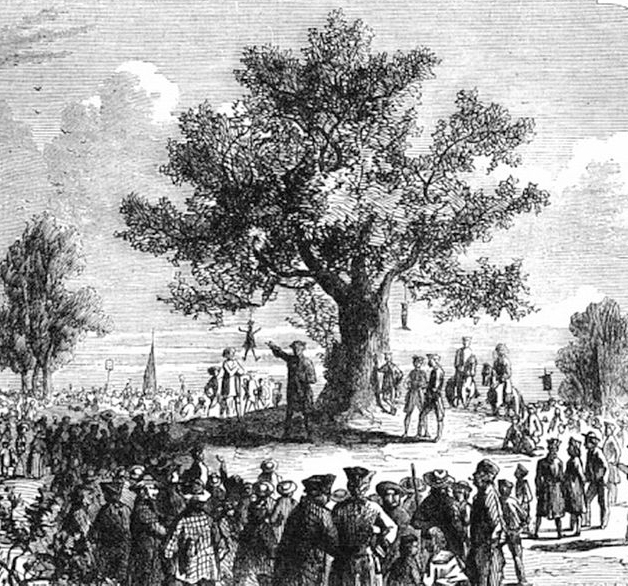d) Protests
The Liberty Tree in Boston served as a focal point for colonial resistance against British policies. This elm tree, located in Boston Commons, became a symbol of defiance where colonists gathered for public meetings and protests. The tree was an important rallying point during the Stamp Act crisis, where effigies of tax officials were hung. The Liberty Tree illustrates the powerful use of symbols and public spaces in uniting colonists and fostering a collective identity in the face of oppressive laws, setting the stage for the broader revolutionary movement.
Near the Liberty Tree, effigies of British officials and tax collectors were often hung in protest. These symbolic hangings represented the colonists’ deep-seated anger and defiance against British taxation and control. However, contrary to popular belief, there were no actual executions at the Liberty Tree. The displays were purely symbolic, intended to send a powerful message of dissent to the British government.

